a good reference:
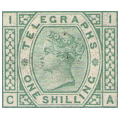
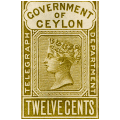
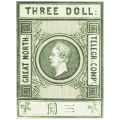
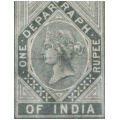
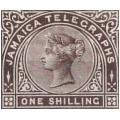

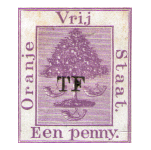
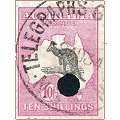
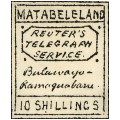
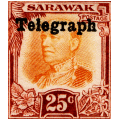
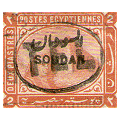
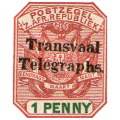
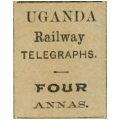
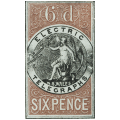
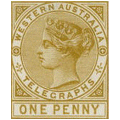
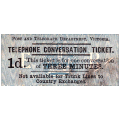
| Up a level | Not my site, but a good reference: |
||||||
 |
 |
 |
 |
 |
 |
 |
 |
| GB | Ceylon | Hong Kong | India | Jamaica | Natal | OFS | Australia and states |
| Up a level | by Dave Elsmore. | ||||||
 |
 |
 |
 |
 |
 |
 |
 |
| Other Africa | Sarawak | Sudan | Transvaal | Uganda | New South Wales | Western Australia | Other Australia |
I have brought these prices up to date and added currency selection. CheckList Setup |
European naval powers were compeing to control resources in Africa for centuries. They took the telegraph with them.
Areas of control changed over time, especially in times of war. The map below is a modern one coloured by areas of control around the end of the first World War. Germany was about to lose its' territory there.
Matabeleland is shown below. Other British areas using special telegraph stamps are on other pages as appropriate.
For European powers on the key shown on the map that issued telegraph stamps/seals that were used in Africa, click the name linking to them.
This page though is to show other, generally later items that deserve to be represented. That includes stationery and postage stamps used for telegraphic purposes.
I am sure there is a lot missing from this page. I would welcome help to fill in the gaps.
Madagascar is the fourth largest island in the world, so it is perhaps surprising that I have seen nothing telegraphic from there.
It did though have a telegraph connection. Interestingly, until 1933 maps showed it connected to Mozambique, but from 1934 it is shown connected to Mauritius.
| Shortcuts to different sections on this page. | |||||||||||||||
| Matabeleland | Northern Rhodesia | Southern Rhodesia | Lagos | Nigeria | British East Africa | E. Africa and Uganda | G.E.A. | Tanganyika | Nyasaland | Kenya & Uganda | Kenya | Liberia | C.O.G.H. | Union of South Africa | Belgian Congo |
Steve Hiscocks wrote:
These stamps were prepared and used by the Reuters Agent in Matabeleland, Capt. C. L. Norris-Newman, to keep track of payments for messages
carried from Bulawayo to the end of the telegraph line then being constructed from Tati to Bulawayo. The service was made generally available to
the public to offset costs but naturally had a limited life. The Post Office took over after about three months when the distance became less than the
minimum covered by the series.
Each sheet contained eighteen stamps: three rows of six of each value. There were fifty sheets cyclostyled (i.e. 300 of each value), and the sheets
were numbered 1 to 50 in red crayon in the top right corners. In use they were stuck to the original message, a copy of which was actually carried by
runners to the telegraph point, and cancelled in blue crayon or ink with Capt. Norris-Newman's initials and the date.
The three values, 10/-, 5/- and 2/6 corresponded to carriage from Bulawayo to Ramaguabane River (96 miles), Mangrove (60 miles) and Fig Tree (29 miles)
respectively, and the numbers actually used were 72, 135 and 151 respectively.
1894 (28 March to June) Cyclostyled in black on white wove paper,
gummed with natural gum (Mimoza). No watermark. Imperf.
A Telegram of the British South Africa Co. Telegraphs to Bulawayo, Matabeleland.
This says "CAPE UNIFORM TIME is observed by the British South Africa Company's Offices."
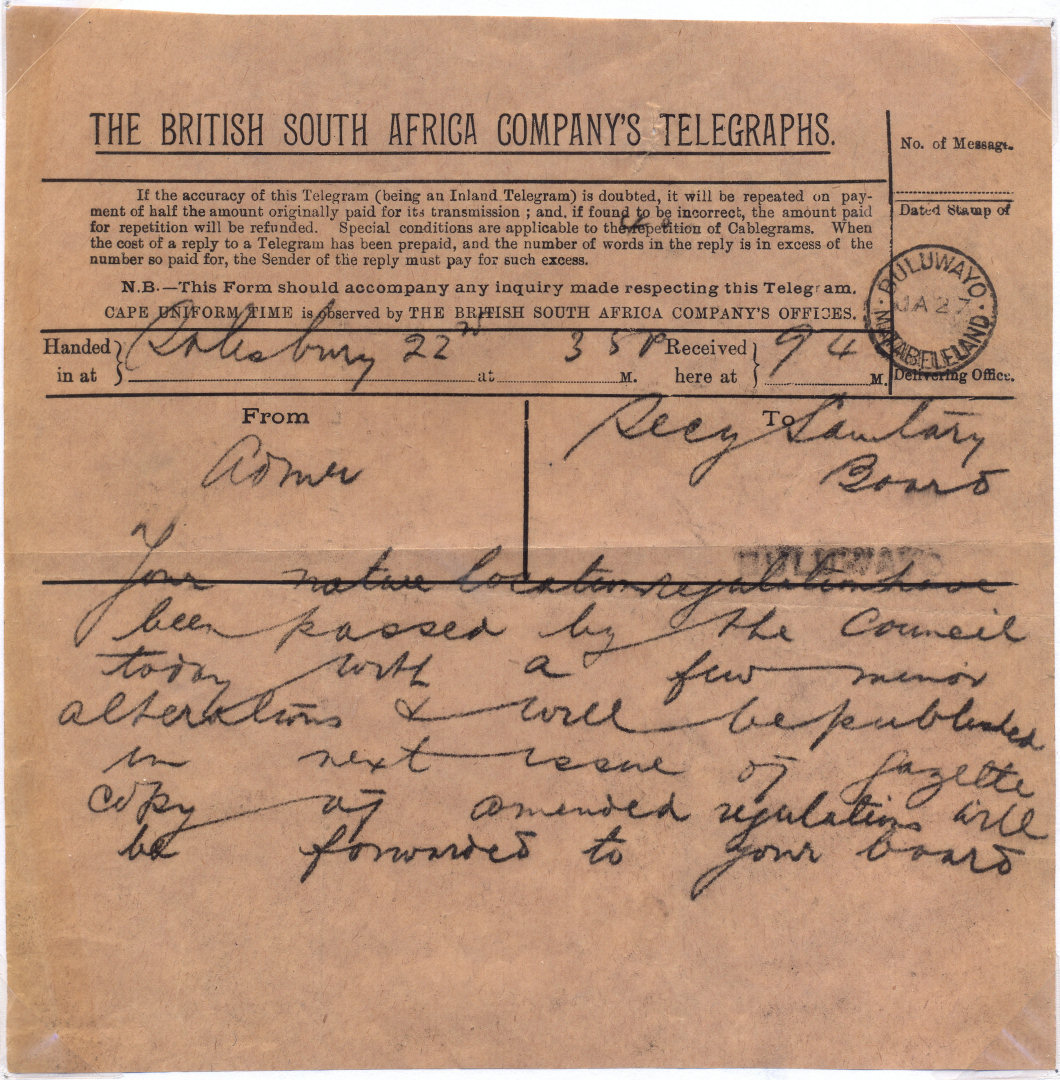
This does not have the year on it, but according to Britannica.com the British South Africa Company became established in the region in 1890
Courtesy of Rolf Lamprecht.
A Telegram of the British Bechuanaland Telegraphs to Bulawayo, Matabeleland.
This is very similar to the last, but says "CAPE MEAN-TIME is observed throughout British Bechuanaland".

This does not have the year on it, but according to CapeStamps.com the British Bechuanaland Telegraphs became incorporated into
the Cape Colony system in 1895 after British Bechuanaland became part of the Cape Colony, so it was presumably before then.
Ex Andrew Higson, courtesy of Spink & Son.
A Telegram of the African Trans-Continental Telegraph Co., Ltd.
from Cape Town to Karonga (on the north-west coast of Lake Nyasa), 15 February 1899.
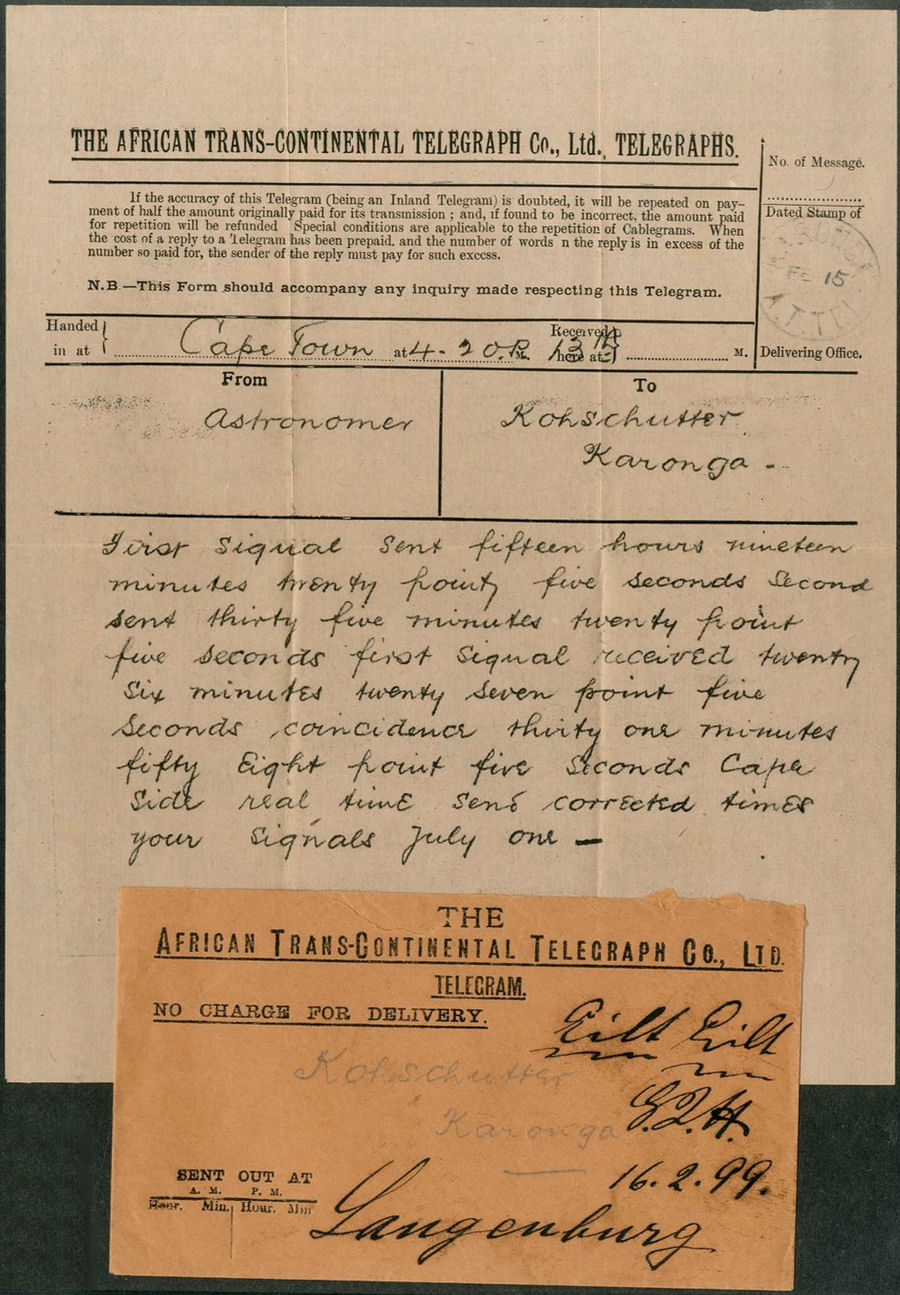
Karonga is to the East of Rhodesia, in the area of Nyasaland, but the African Trans-Continental Telegraph Co., Ltd.,
was founded by Cecil Rhodes so I include it here. It ran through that protectorate, with a branch line established from Lake Nyasa to Fort Jameson.
Ex Andrew Higson, courtesy of Spink & Son.
1917 Telegrams of the African Trans-Continental Telegraph Co., Ltd.
received at Zomba (now in southern Malawi, to the west of Lake Chilwa) in September 1917.
These now have added "RHODESIAN MEAN TIME is observed by The African Transcontinental Telegraph Company's Offices".
A Telegram of the Northern Rhodesia Telegraphs. Sent from Bulawayo and received at Broken Hill 15 June 1935.
Form T. 2. / B. & C.
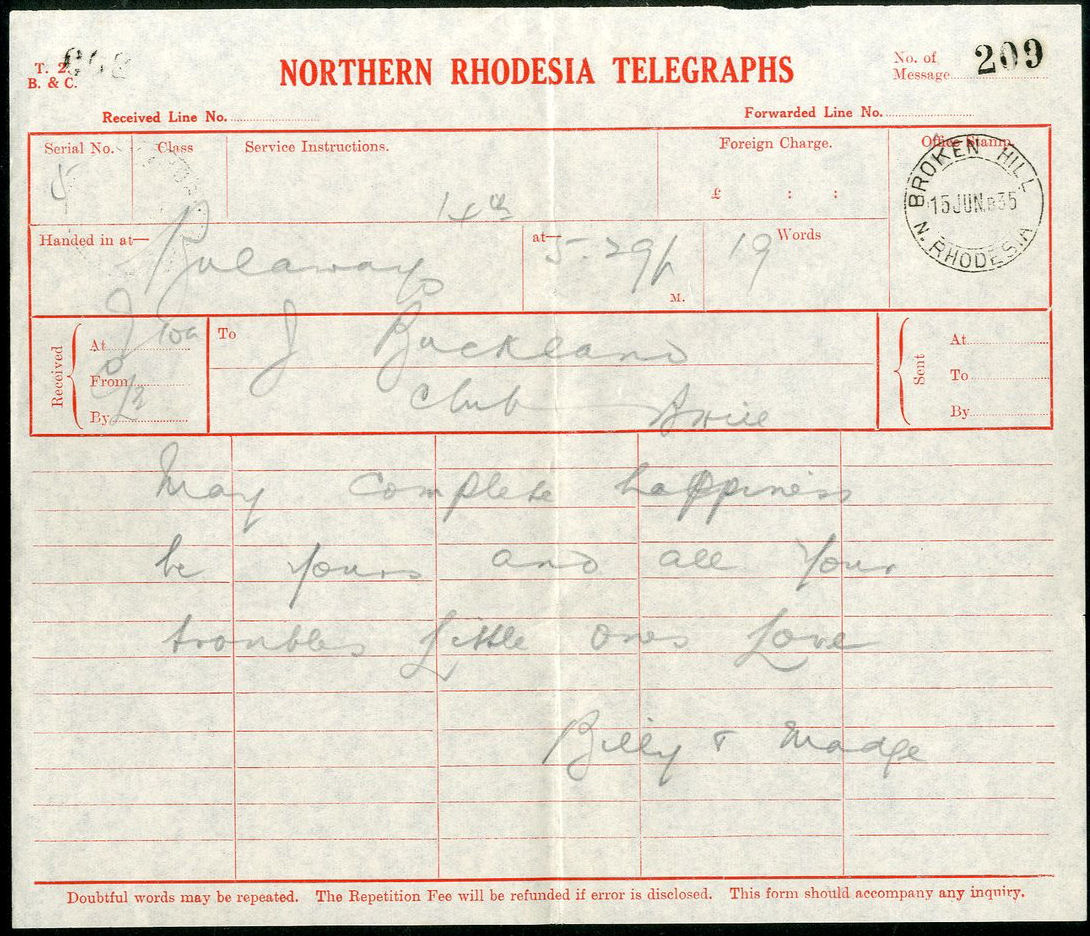
Ex Andrew Higson, courtesy of Spink & Son.
A used "Post Office Telegraphs, S. Rhodesia" form of 29 April 1929, with imprint of "962—6000.23", which might indicate a printing date in 1923. There is "B & C" under that.
It is also marked "T.2." at the top-right. Space for 50 words, very wide.
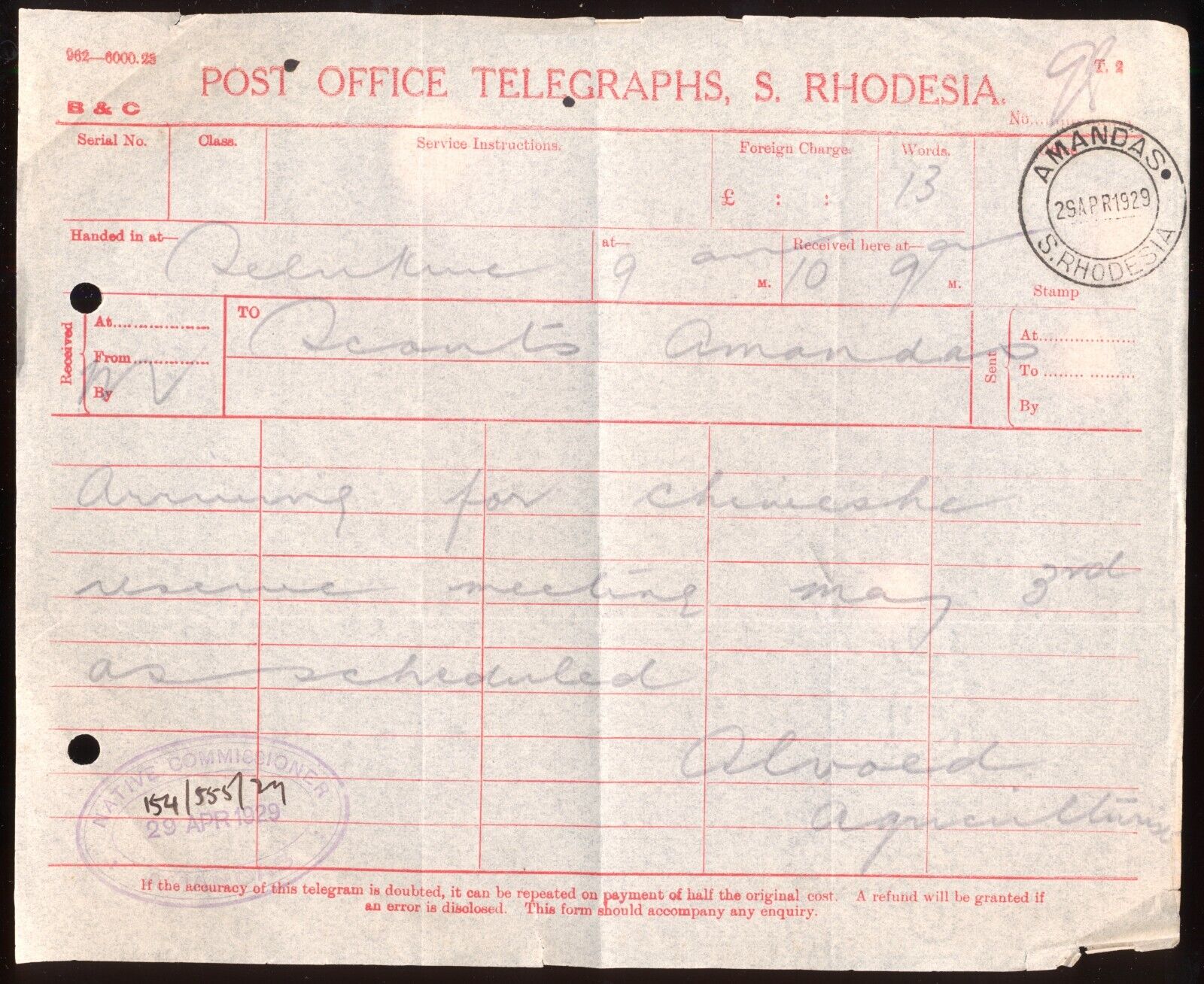
Image, with permission, from eBay.
A used "Post Office Telegraphs, S. Rhodesia" form of 26 May 1954, with an unclear imprint of "P.M.G.—P.M 29811—H.15337—30M.—23.7.50" (see the one below) , suggesting a printing date of 23 July 1950.
Below the imprint, it now looks like "R. & C." It is also marked "T.2." at the top-right. Compaing the filing holes of the one above and the one below, this is about the same height as the one above, but much narrower.
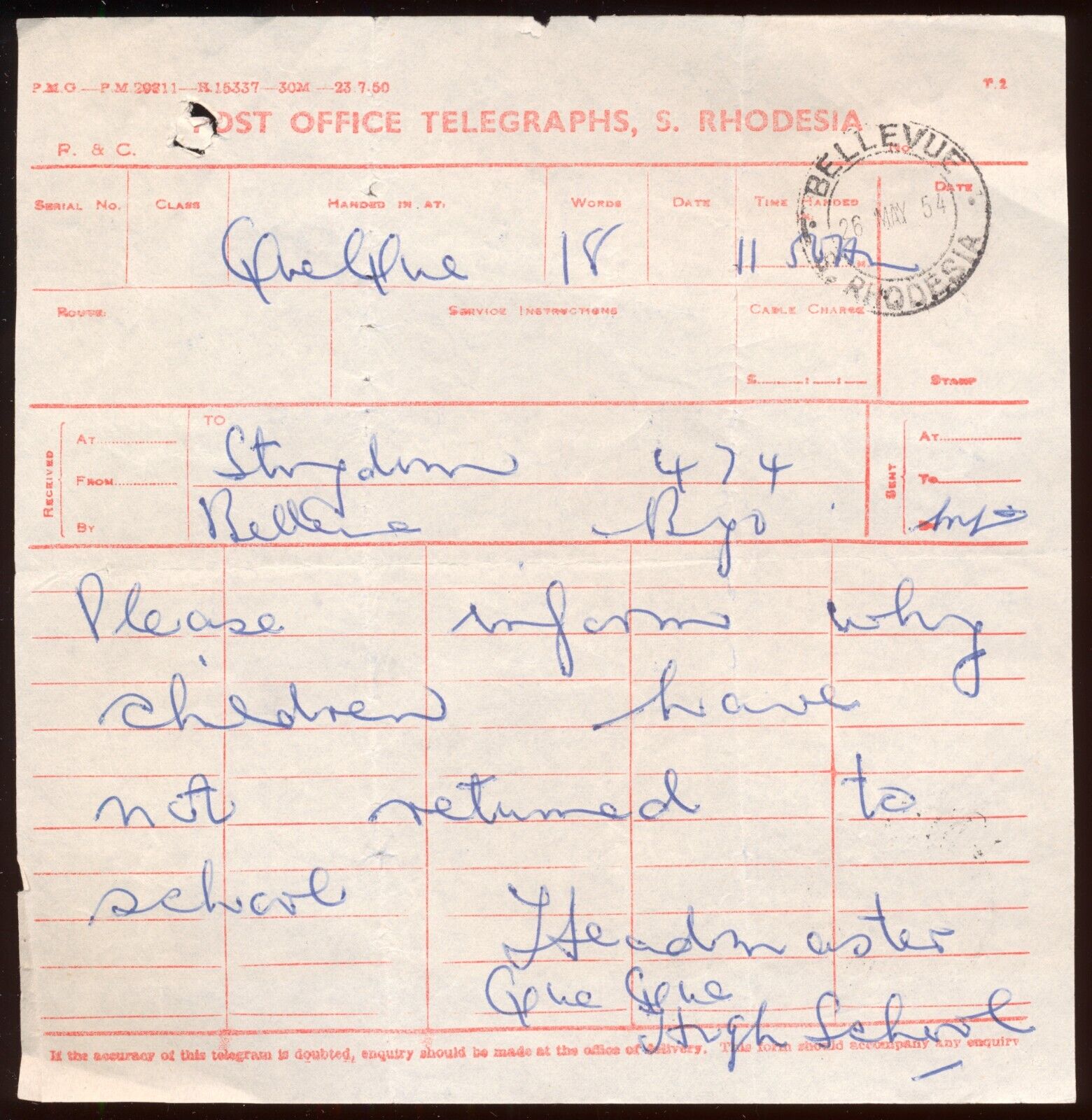
Image, with permission, from eBay.
A used "Post Office Telegraphs, S. Rhodesia" form of 2 October 1956, Gutu, with imprint of "P.M.G.—P.M 29811—H.15337—30M.—23.7.50", as last.
It is also marked "T.2." at the top-right.
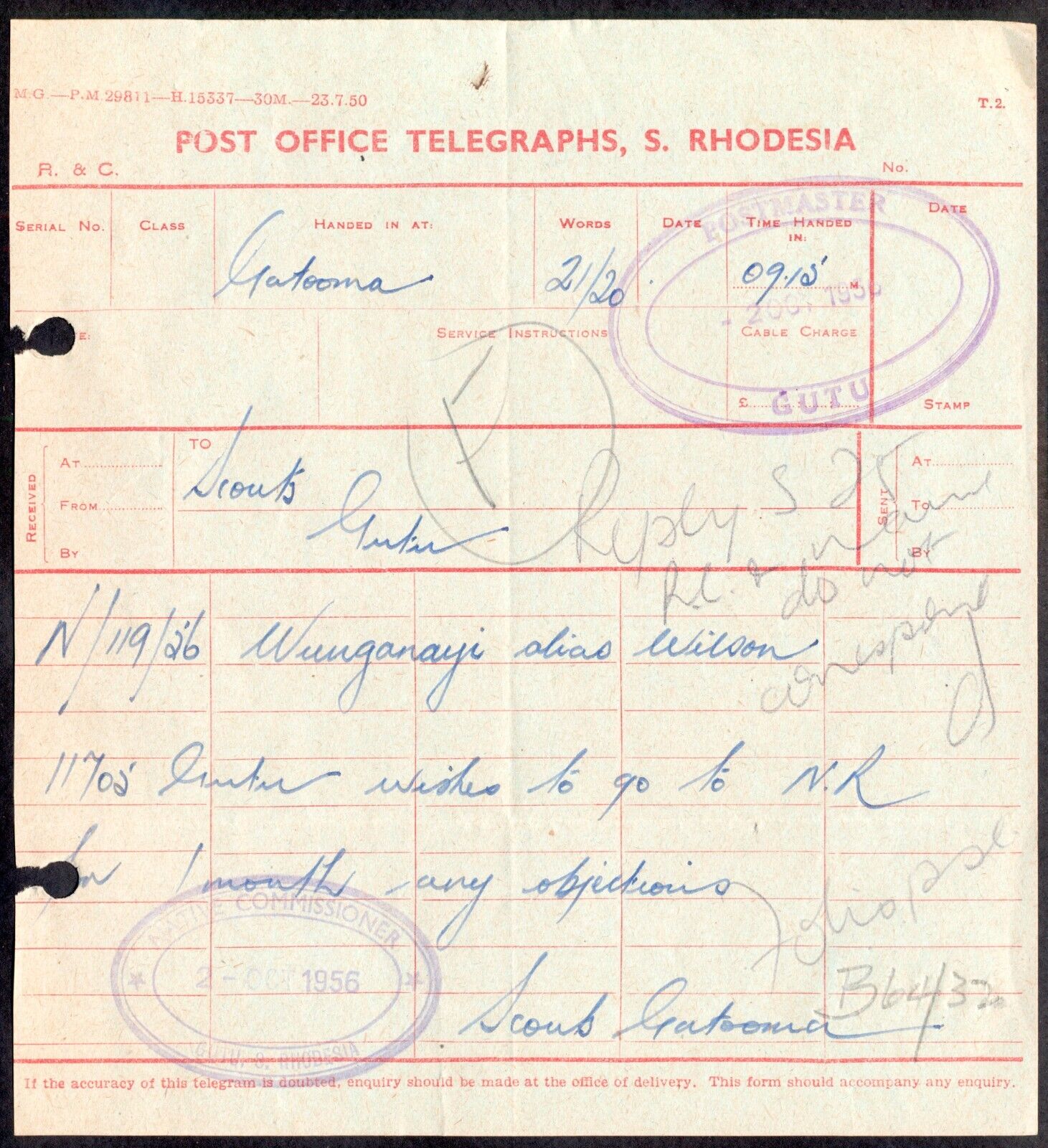
Image courtesy of AlphaOmegaPhilately on eBay (click image for listing).
These are all on Crown CA watermarked paper.
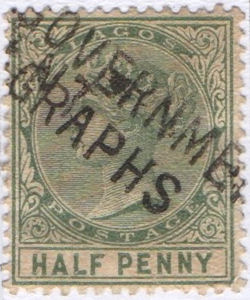 |
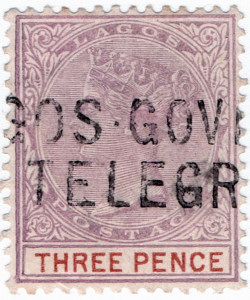 |
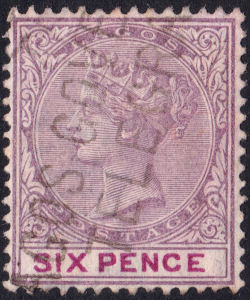 |
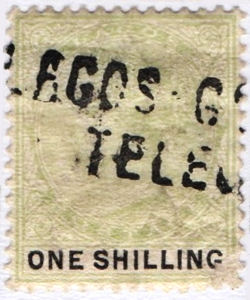 |
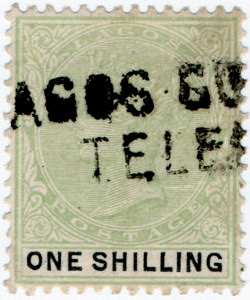 |
| ½d green from 1882 courtesy of Paul & Les Bottomley |
3d lilac and red-brown from 1891 courtesy of ibredguy.co.uk |
6d lilac and red-violet from 1887 | 1s green from 1887 courtesy of Paul & Les Bottomley |
1s green from 1887 courtesy of ibredguy.co.uk |
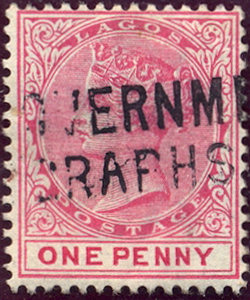 |
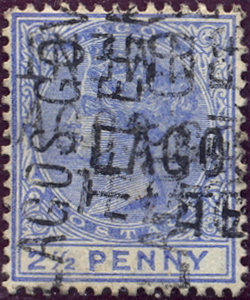 |
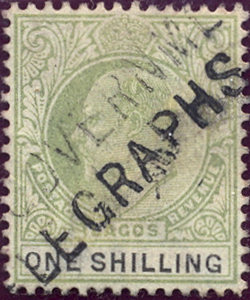 |
| 1d red from 1884 courtesy of Rolf Lamprecht |
2½d blue from 1887 courtesy of Rolf Lamprecht |
1/- green Edwardian from 1904 courtesy of Rolf Lamprecht |
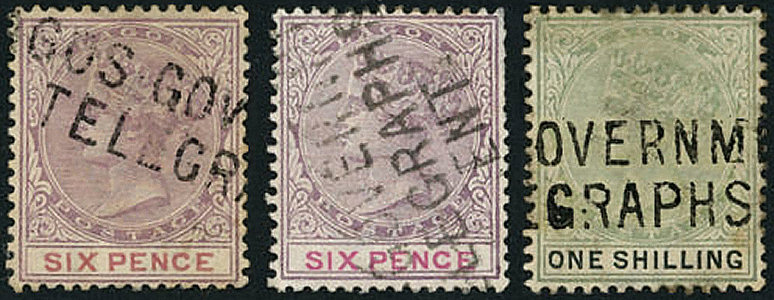
These examples, courtesy of Ray of harris610 on eBay, were sold in December 2018 for £77.89 described as:-
Lagos SG35a x2, SG38a. Stamps catalogued £56 as postally used. Good condition, but slight perforation damage to centre stamp.
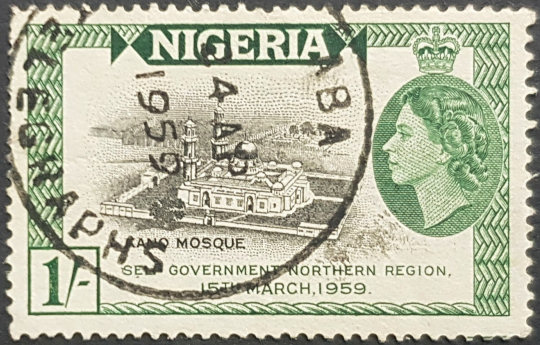
A 1/- stamp with a Telegraph cancel of Aba (Southern Nigeria) dated 24 April 1959.
Image courtesy of Matthew Axiak.
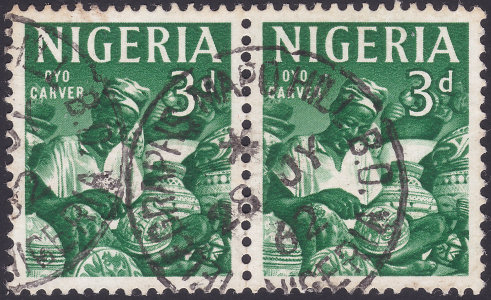
A pair of 3d stamps with a Telegraph cancel of Mapo Hill (Abadan) Branch Office dated 28 July 1962.
Not really Telegraphic, but it is relevant. These are postage stamps of India with red manuscript "B.E.A." provisional overprints (except the ½A) used 20 August 1890.
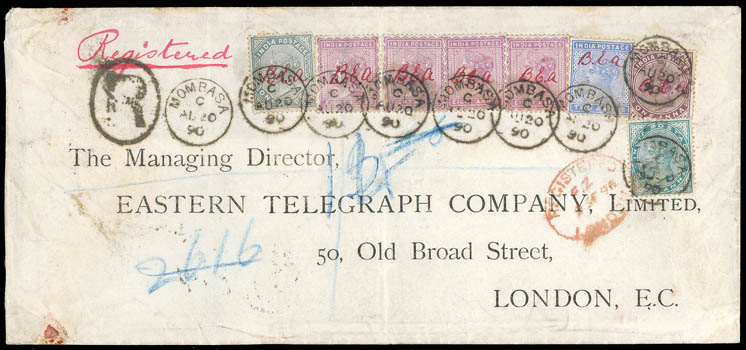
It is addressed to the Eastern Telegraph Co., at 50, Old Broad Street, London E.C., at a time when that company was laying underwater cable between
Mombasa and Lamu Island (240 km north-northeast of Mombasa) and just previous had the done the same between Zanzibar and Mombasa.
All of which explains why this was NOT telegraphed. The London Registration mark looks to be dated 9 September.
Image courtesy of Schuyler Rumsey Philatelic Auctions. (click on image for listing).
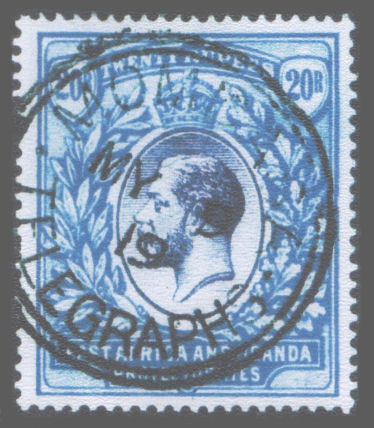
This is a 20R stamp of the set but without the overprint dated May 1919.
It has a MOMBASA TELEGRAPHS cancel and no punch hole.
The high values, 1R to 500R (yes 500R) are this large format. Image courtesy of Les Bottomley.
The East Africa and Uganda Protectorates (above) were occupied by Germany in W.W.1 and then by the British in 1917, initially using stamps of India overprinted I.E.F. until June.
A League of Nations Mandate in 1922 split the former German East Africa into British, Belgian and Portuguese parts.
1917 - Stamps of East Africa and Uganda overprinted G.E.A. as a temporary measure.

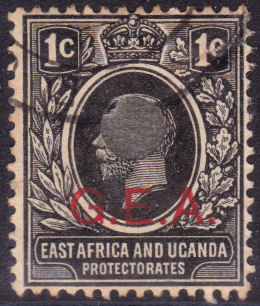
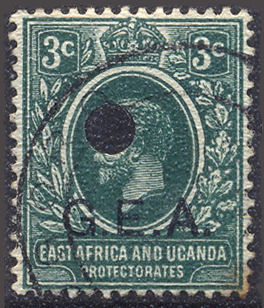
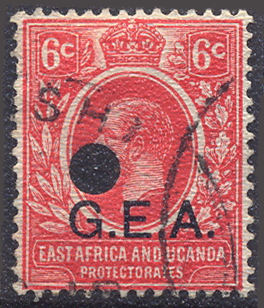
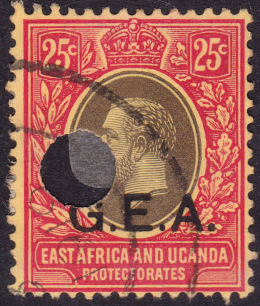
I also show some with British Army Telegraph cancels, but there was other telegraphic usage outside that scope. The 3c and 6c images above are courtesy of Rolf Lamprecht.
These large-format stamps, with British Army Signals cancels were used in 1921 and also punched.
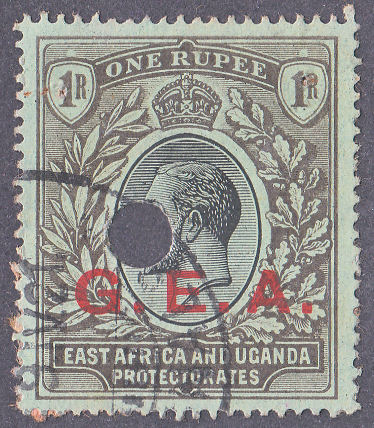
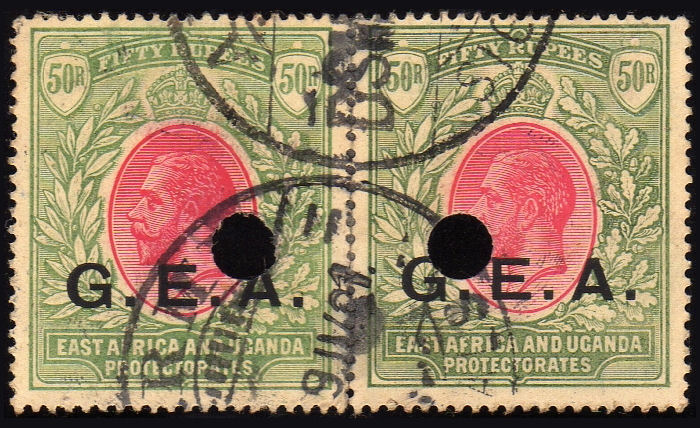
Army Signals cancels are larger and often in mauve. The left one is mine, the right image is courtesy of Andrew Higson.
1922-5 - New stamps inscribed simply Tanganyika.
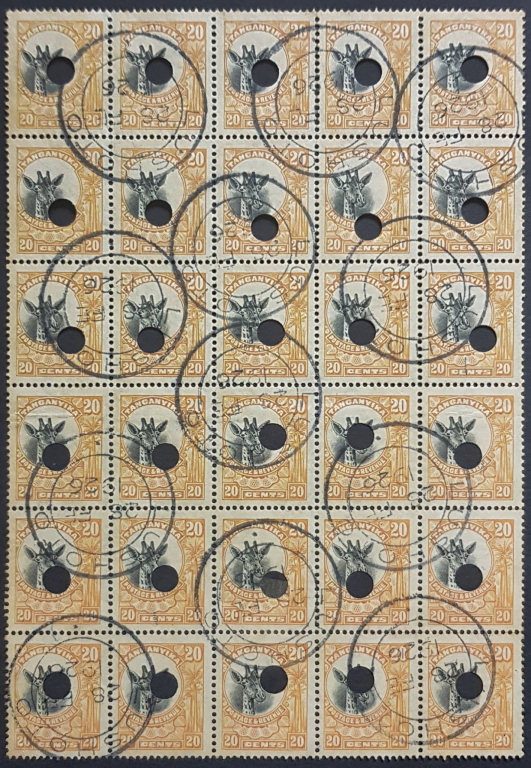
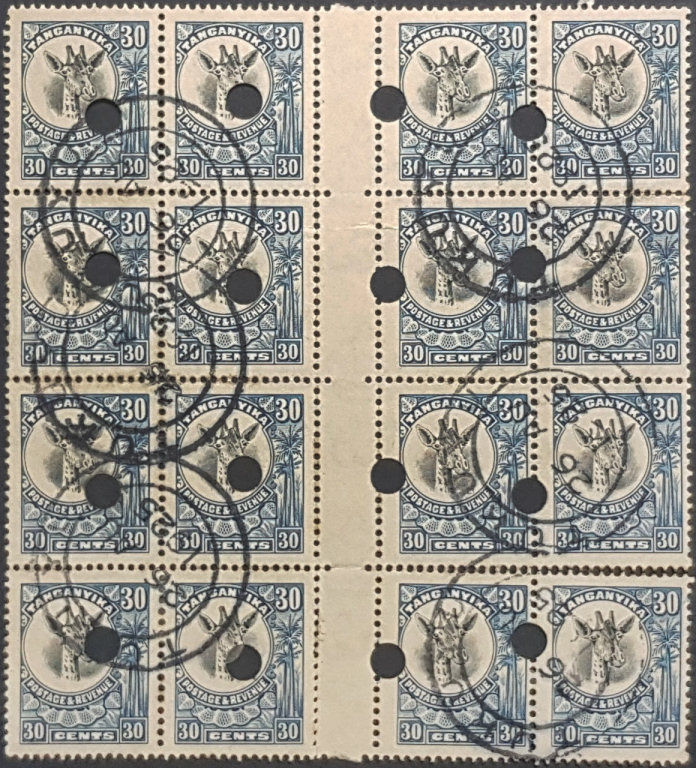

Punched blocks (not to scale) of 20c, 30c with gutter and 75c courtesy of Matthew Axiak.
1927 - New stamps inscribed Mandated Territory of Tanganyika.

50c and 75c courtesy of Matthew Axiak.
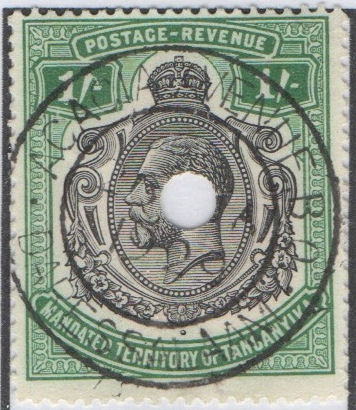

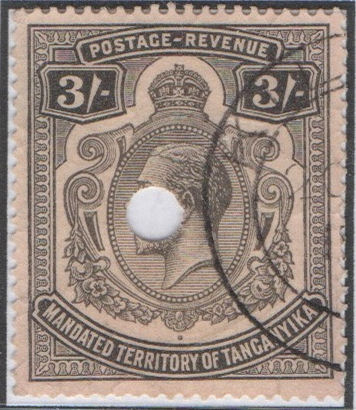
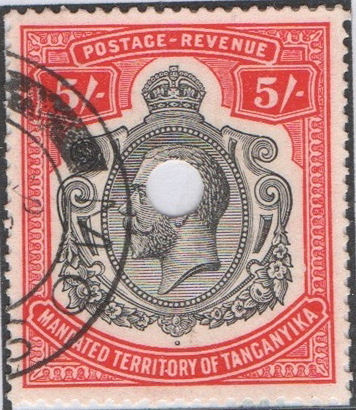
Again, stamps up to 75c were in a smaller format. The large format also includes 10/- and £1 values.
High-value images courtesy of Les Bottomley.
Formed in 1907 with military involvement in WWII. Became part of the Central African Federation in 1953
and became independent as Malawi in 1964.
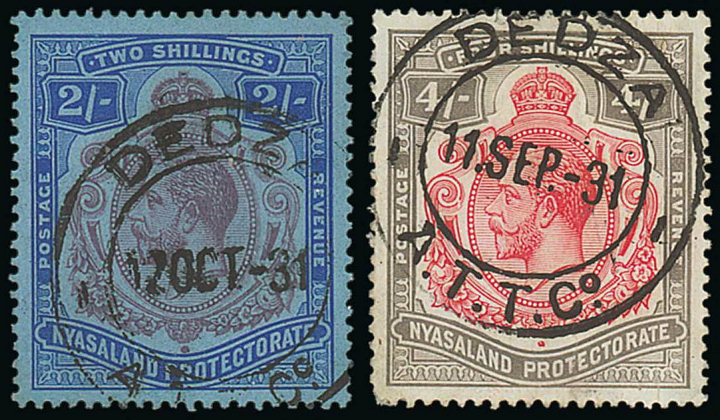 Dedza is near the border with Mozambique and has a mountain, making it strategic for radio telegraphy. The town saw an influx of refugees in the 1920s and ’30s from Mozambique (evading taxation). A.T.T. Co. was likely providing telegraphy. 1931, 2/- and 4/- Image courtesy of Andrew Higson. |
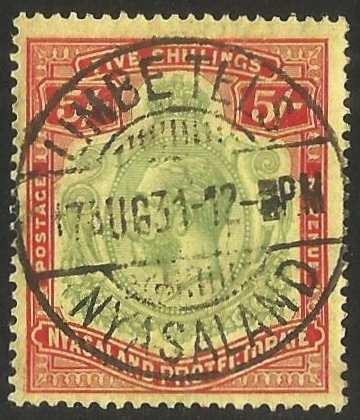 Limbe Tels. Limbe is near Blantyre city. This is dated 17 August 1931. 5/- image courtesy of Bram Leeflang. |

An unusual example of Telegraphic cancels on Postage Due stamps, used 9 May 1929 in Kampala.
Image courtesy of Bram Leeflang.
A couple of Telegraphic cancels courtesy of Les Bottomley:
The Liberia Telecommunications Corp., was established in 1973 as the sole fixed line telephone operator in Liberia.
It was re-organized in 2007 as Libtelco. This image of a delivery envelope is all that I have seen. Further information and/or images would be appreciated.
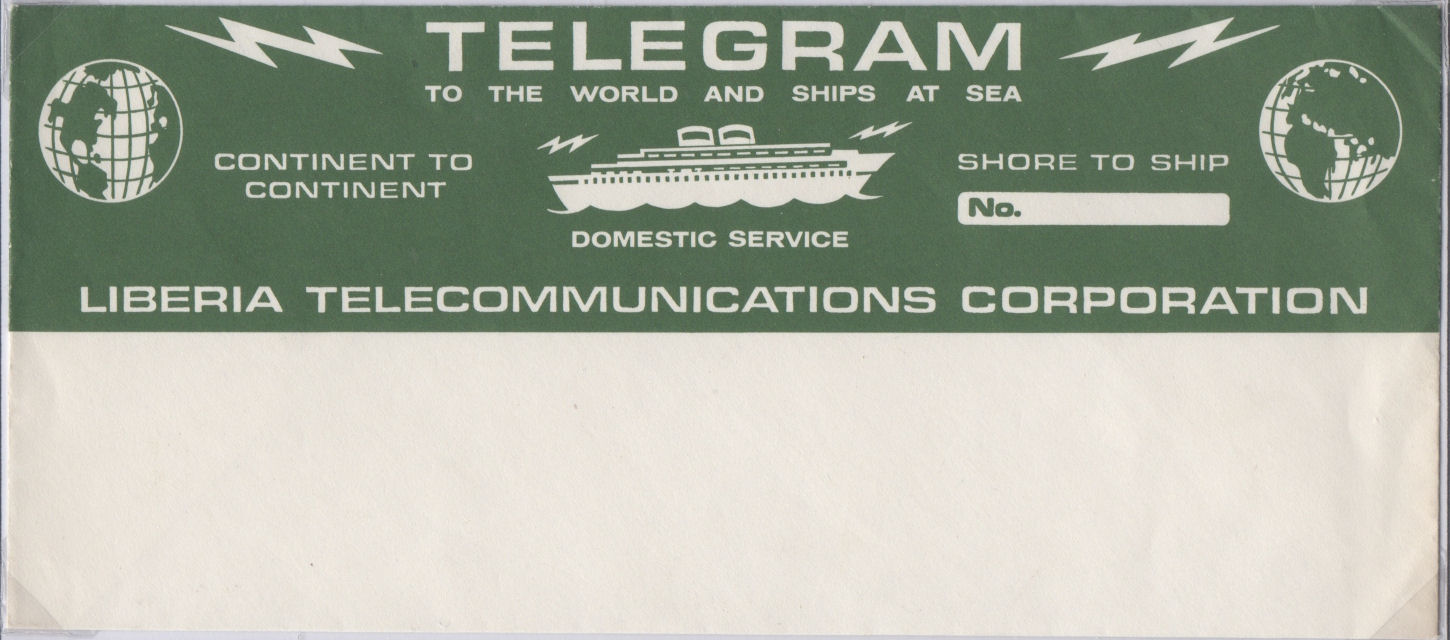
Image courtesy of Les Bottomley.
Telegraphic and Telephonic cancels are known.
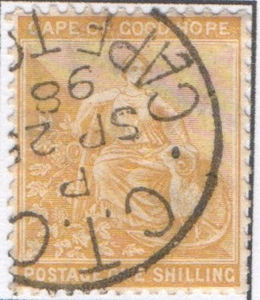 |
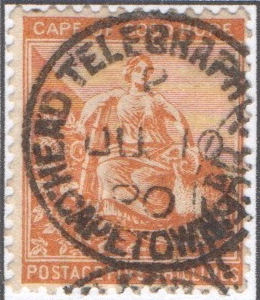 |
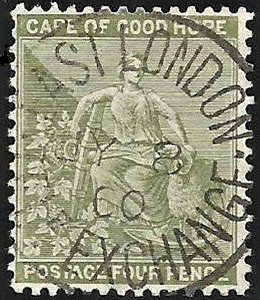 |
| C.T.O (Central Telegraph Office) on 1/- | Head Telegraph Office on 5/- | East London Telephone Exchange. |
| Cape Town cancels courtesy of Les Bottomley | Courtesy of Bram Leeflang | |
Bram Leeflang says of the East London item that only a few are recorded between 24 March 1900 and 19 March 1901.
Only East London and Rondebosch, shown below are known to have been using this kind of datestamp.
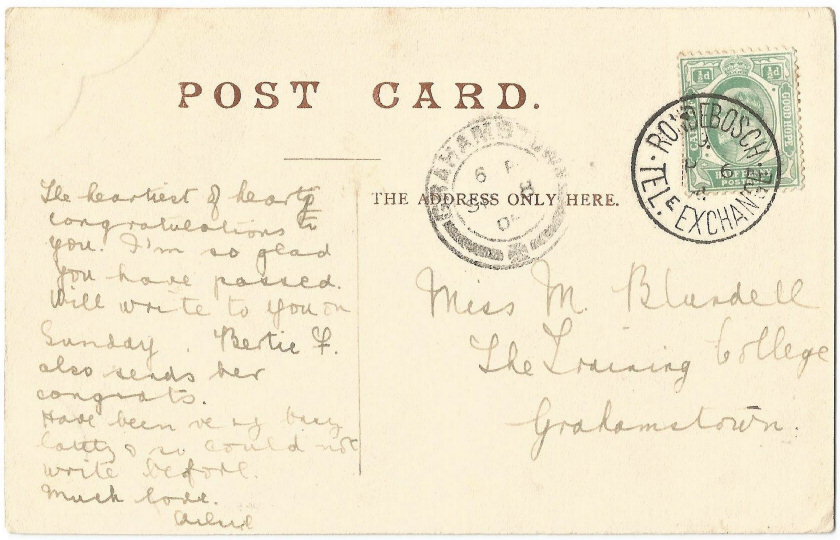
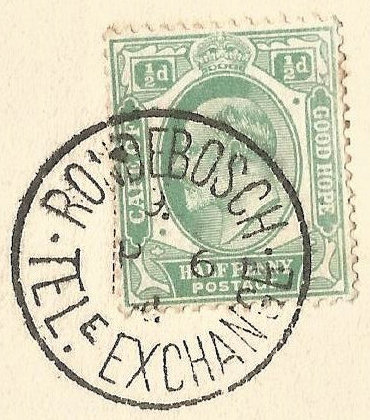
He says that the Rondebosch Telephone Exchange did not have the authority to process mails,
but a few of these single circle office date stamps have been recorded between 20 June 1904 and 4 November 1908.
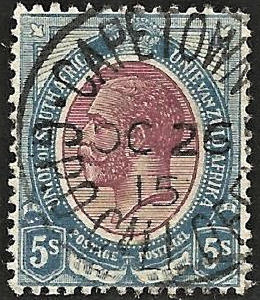 |
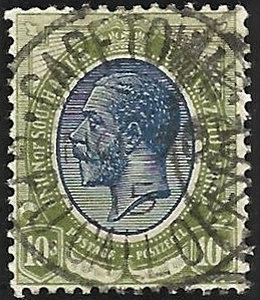 |
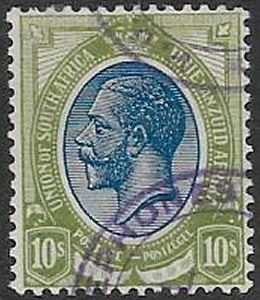 |
| Cape Town Call Office, 26 October 1915 5s - courtesy of Bram Leeflang |
Cape Town Call Office, 6 November 1915 10s - courtesy of Bram Leeflang |
Telephones ? In purple - Date unknown 10s - courtesy of Martin Townley. |
Bram Leeflang says of the "Call Office" stamps that they are on the 1913 issue and he has not seen any others from anywhere in South Africa.
Michael Wigmore supplied the helpful information that it is in Putzel Postmarks, vol 2, Cape Town ‘sundry’ p.86, no.460x.
That illustrates another 5s dated in August 1914 with the comment "not seen on mail".
If the 'Call Office' was a place where the public could go to make telephone calls, similar to the NTC in Britain, then the stamps
could have paid for the calls and be duly stamped, either in a book or on a receipt.
Examples on piece may not still exist though.
The "TELEPHONES" item is probably something similar but examples showing more parts of it are needed.
Anyone have any ?
A Reuters Telegram from London using an unusual 10-letter code. Reuters charged words longer than 10 letters as 2 words.
Used at Cape Town, and dated 1 January 1929
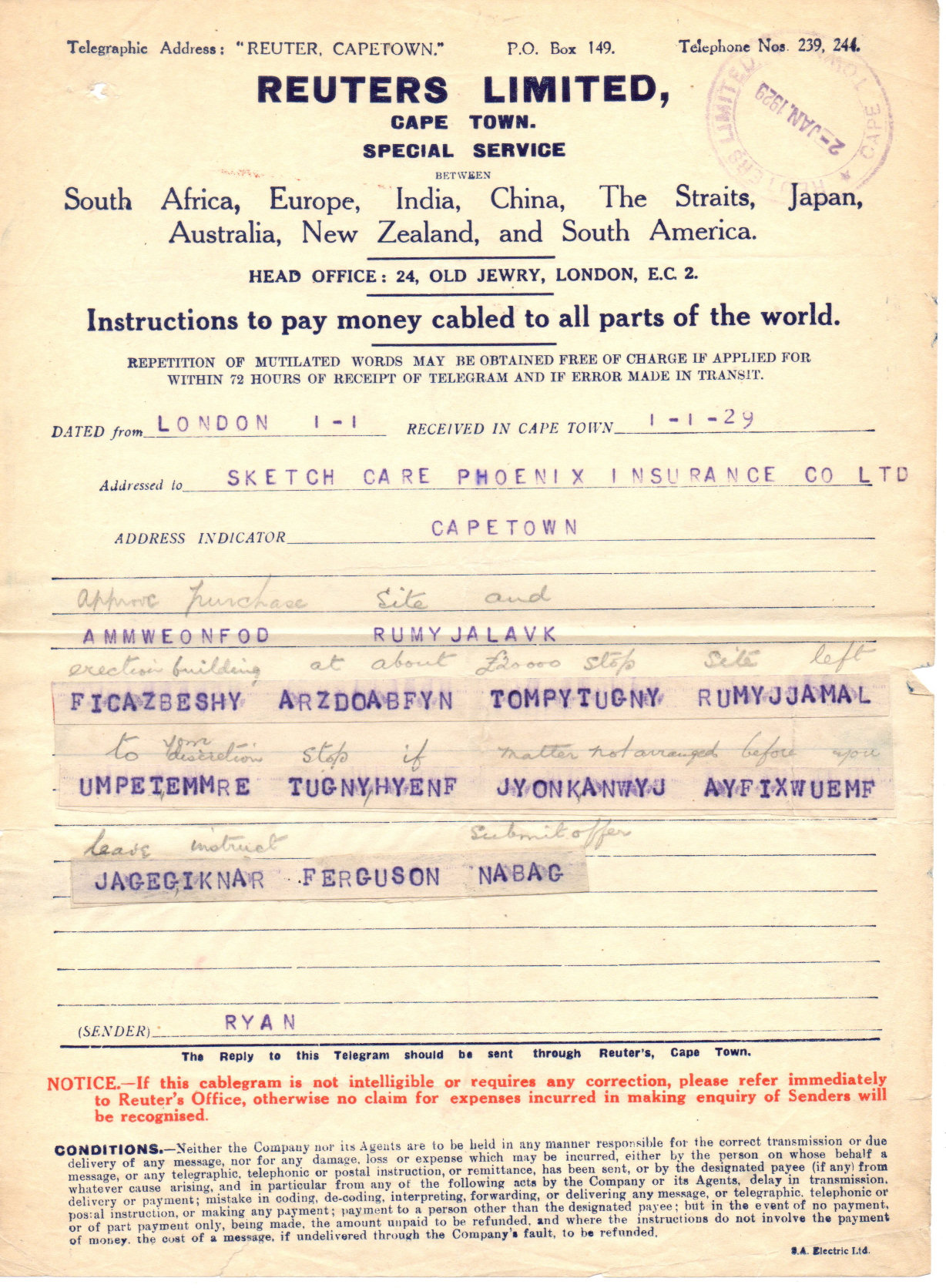
"S.A. Electric Ltd. " imprint at bottom-right. Image courtesy of James Hammond.
An Overseas Telegram of "The Wireless Telegraph Company of South Africa Ltd." of Cape Town, marked "T. 14." at top-right.
"Via Beam" (see Imperial Wireless). Used at Cape Town, and dated 1 November 1929

"Daily Letter Telegram. Subject to minimum delay of 48 hours." is stamped at bottom-right.
Image courtesy of AlphaOmegaPhilately on eBay (click image for listing).
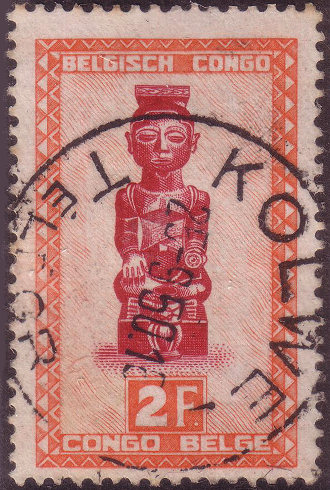
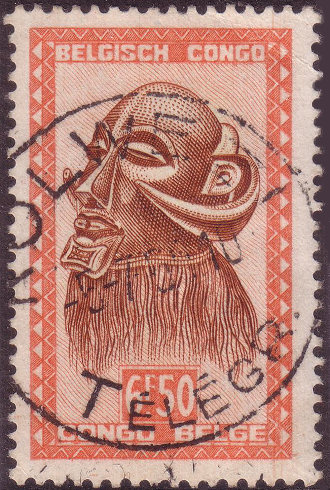
A couple of stamps used in 1950 at Kolwezi in a mining area with Telegraphic cancels - courtesy of Rolf Lamprecht.
As always, If anyone can provide further information and/or scans to help with this page, I am happy to give appropriate credit.
Last updated 24th. March 2024
©Copyright Steve Panting 2012/13/14/15/16/17/18/19/20/21/22/23/24 except where stated.
Permission is hereby granted to copy material for which the copyright is owned by myself, on condition that any data is not altered and this website is given credit.